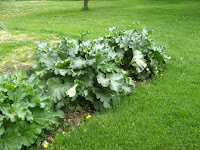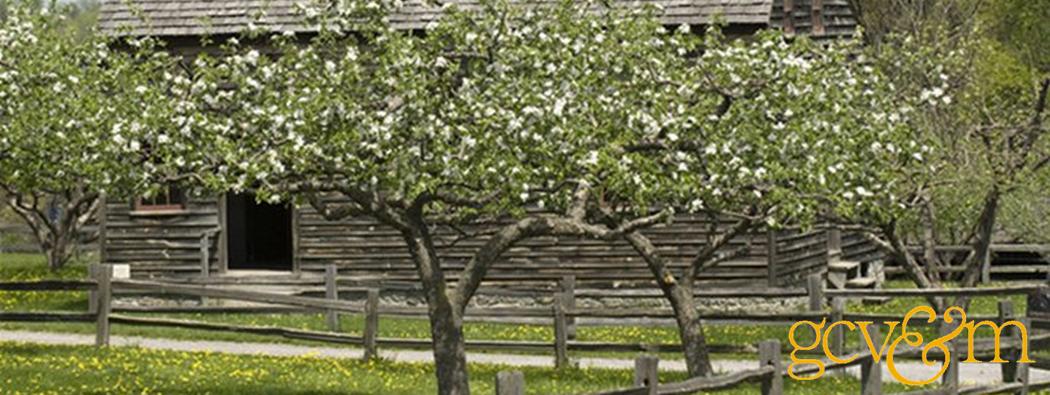Rhubarb or Pie Plant
This is one of the greatest of spring luxuries, though the quantity of sugar required to be used with it renders it rather expensive. Remove the stringy part and cut up into small piece either for stewing or in pies. No spice is required, but sugar may be put in as long as your conscience will let you, and a handful afterwards.
-Jeannie Junes American Cookery Book, 1870
In continuing o

ur series on
Six Weeks of Want, we turn to rhubarb, and the first of the sweet treats of the year. Although rhubarb is classified as a vegetable it is usually treated as a fruit because of the manner in which it is used. It is sometimes also called Pie Plant, or even Persian Apple. Typically, as the quotation states above, rhubarb is prepared with a good quantity of sugar, thus making it more suitable for dessert than anything else.
However, let us imagine we are 19th century villagers and we've had nothing fresh in a pie since apples last fall. Our fruit pies have all been made with dried fruit and even that has run out by now. We're ready to throw caution to the wind, use some sugar and eat the first "fruits' of our garden after a long winter!
Our first recipe, is prepared like an apple pie and is done in the manner that we used in the village opening weekend. It's a very simple recipe but yields a delicious pie, providing your conscience allows you to use enough sugar to sweeten it.
 Rhubarb Pie,The New England Economical Housekeeper, E. A. Howland, 1845 "Pull the rhubarb from the stalk instead of cutting it; peel off theskin from the stalk, and cut it into small pieces; put them in the piewith plenty of brown sugar; you can hardly put in too much. Cover thepie, and bake, like apple, in a deep plate."
Rhubarb Pie,The New England Economical Housekeeper, E. A. Howland, 1845 "Pull the rhubarb from the stalk instead of cutting it; peel off theskin from the stalk, and cut it into small pieces; put them in the piewith plenty of brown sugar; you can hardly put in too much. Cover thepie, and bake, like apple, in a deep plate."
An alternative method has you stew the rhubarb with sugar until this cooks down to something akin to apple butter prior to baking it in a pie shell.
RHUBARB STALKS, OR PERSIAN APPLE
The Frugal Housewife, Lydia Maria Francis Child, 1830
"Rhubarb stalks, or the Persian-apple, is the earliest ingredient for
pies, which the spring offers. The skin should be carefully stripped,
and the stalks cut into small bits, and stewed very tender. These are
dear pies, for they take an enormous quantity of sugar. Seasoned like
apple pies.
Gooseberries, currants, &c. are stewed, sweetened, and seasoned like
apple-pies, in proportions suited to the sweetness of the fruit; there
is no way to judge but by your own taste. Always remember it is more
easy to add seasoning, than to diminish it."
Ellen's Pudding, or Rhubarb Tart
Miss Beecher's Domestic Receipt Book, C. Beecher, 1846
1 pint stewed pie plant
4 ounces sugar
1/2 pint cream
2 ounces crackers -- pounded
3 large eggs
"Stew the pie plant, and rub it through a sieve. Beat the eggs well,
and mix with the sugar and cream. Stir the cracker crumbs into the
fruit, and add the other ingredients. Line your plate with a moderately
rich paste, and bake half an hour."
Whichever method you choose, the knowledge that you are eating a fresh fruit pie at long last will be the sweetest thing of all!



















